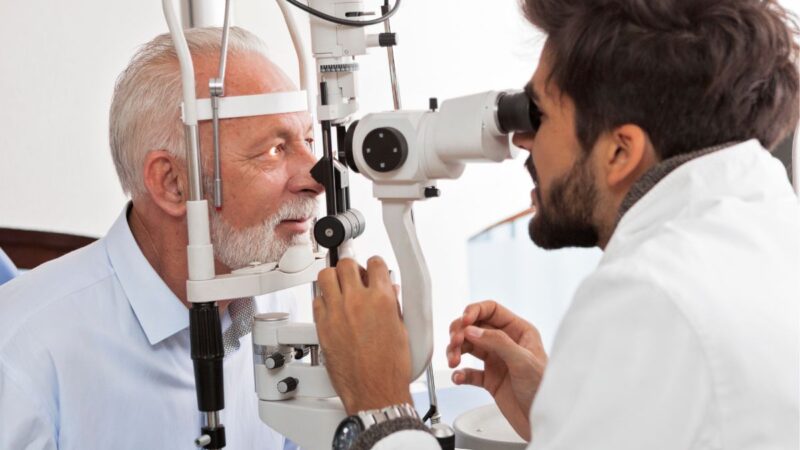Discover a Neurologist in Andalusia: Specialized Clinics and Care Providers
Discover a Neurologist in Andalusia: Specialized Clinics and Care Providers
Blog Article
The Advantages And Disadvantages of Various Refractive Surgeries for Improved Eyecare

LASIK Surgical Treatment
LASIK surgical treatment is a frequently executed refractive treatment that aims to remedy vision problems such as nearsightedness, farsightedness, and astigmatism. During the treatment, a thin flap is created on the cornea, and a laser is made use of to improve the underlying tissue, remedying the refractive mistake.
Among the primary advantages of LASIK surgical procedure is the fast enhancement in vision experienced by lots of people. The majority of individuals notice a significant enhancement in their eyesight shortly after the treatment, with very little downtime required for recovery. Furthermore, LASIK is understood for its high success rate and low occurrence of issues when performed by competent cosmetic surgeons. Like any kind of surgical treatment, LASIK additionally brings some dangers, consisting of completely dry eyes, glow, halos, and under or overcorrection of vision. It is vital for people taking into consideration LASIK surgery to undertake an extensive examination by an eye treatment specialist to establish if they appropriate prospects for the treatment.
PRK Treatment
The PRK treatment, also recognized as Photorefractive Keratectomy, is a type of refractive surgical procedure that intends to deal with vision problems similar to LASIK surgical treatment. Unlike LASIK, which includes creating a flap in the cornea, PRK deals with the surface layer of the cornea. Throughout the PRK procedure, the external layer of the cornea, called the epithelium, is eliminated to enable improving of the underlying corneal tissue with an excimer laser. This reshaping assists to correct refractive mistakes such as farsightedness, astigmatism, and nearsightedness.
Among the advantages of PRK over LASIK is that it eliminates the danger of flap-related complications given that no flap is produced during the surgical treatment. This can be valuable for people with slim corneas or those entailed in contact sports where eye injury is an opportunity. However, the healing time for PRK is commonly much longer contrasted to LASIK, as the outer layer of the cornea needs time to regenerate after the procedure. Regardless of the longer healing period, PRK can be an ideal option for people looking for vision adjustment surgical procedure.
SMILE Surgical Treatment
A sophisticated refractive surgical procedure method acquiring popularity in the field of ophthalmology is SMILE Surgery. Small Incision Lenticule Removal (SMILE) is a minimally invasive treatment that fixes vision by reshaping the cornea utilizing a femtosecond laser. Unlike traditional LASIK surgical procedure, SMILE Surgery involves creating a tiny linked here incision in the cornea to remove a lenticule, which results in less disruption to the corneal framework and possibly quicker recovery times.
One of the key benefits of SMILE Surgery is its capacity to treat nearsightedness (nearsightedness) and astigmatism with high accuracy, bring about outstanding visual results for clients. The minimally intrusive nature of the treatment also minimizes the risk of difficulties such as completely dry eye disorder, making it a beneficial option for people seeking refractive surgical procedure.

LASEK Strategy
Having discovered the benefits and considerations of SMILE Surgical procedure, one more notable refractive surgery method worth analyzing is the LASEK Strategy. LASEK, which means Laser-Assisted Subepithelial Keratectomy, is a kind of laser eye surgery that intends to fix refractive mistakes such as myopia (nearsightedness), hyperopia (farsightedness), and astigmatism.
Unlike LASIK, LASEK does not include developing a corneal flap. Instead, throughout a LASEK treatment, the surgeon utilizes a watered down alcohol solution to loosen up the slim external layer of the cornea, known as the epithelium.
Among the primary benefits of LASEK is that it can be ideal for people with thin corneas that might not be good candidates for LASIK. Additionally, LASEK commonly results in minimal post-operative discomfort and a quicker healing time contrasted to PRK. The aesthetic healing process with LASEK may be somewhat longer than with LASIK.
Implantable Get In Touch With Lenses
Implantable Contact Lenses use a long-term vision modification option for people looking for an option to typical call lenses or glasses. These lenses, likewise referred to as phakic intraocular lenses, are operatively inserted into the eye to remedy refractive mistakes such as nearsightedness (nearsightedness), hyperopia (farsightedness), and astigmatism. cardiologist andalusia. Unlike typical contact lenses that rest on the surface area of the eye, implantable contact lenses work within the eye itself, offering clear vision without the demand my latest blog post for daily upkeep or elimination
One of the vital advantages of implantable contact lenses is their permanence. When placed, they can remain in the eye indefinitely, using consistent and secure vision correction. Furthermore, these lenses can be an excellent option for people that are bad candidates for laser eye surgery or that choose a reversible vision modification procedure.
Nonetheless, implantable contact lenses do carry some dangers, including the capacity for cataracts or raised eye stress. It is important for individuals considering this option to seek advice from an eye care professional to figure out if implantable contact lenses are the appropriate selection for their details demands and eye health and wellness.
Conclusion
In final explanation thought, each kind of refractive surgical treatment has its own advantages and negative aspects. LASIK surgery is prominent for its quick recuperation time, while PRK procedure may be appropriate for people with thin corneas. SMILE surgical procedure offers minimal discomfort throughout the procedure, yet LASEK technique may have a longer recovery procedure. Implantable call lenses supply an alternative for those that are not suitable candidates for conventional surgical procedures. Clients need to seek advice from with their eye treatment provider to identify the ideal choice for their specific demands.

In General, SMILE Surgical treatment provides an appealing option for individuals looking to improve their vision via refractive surgical procedure.
Report this page